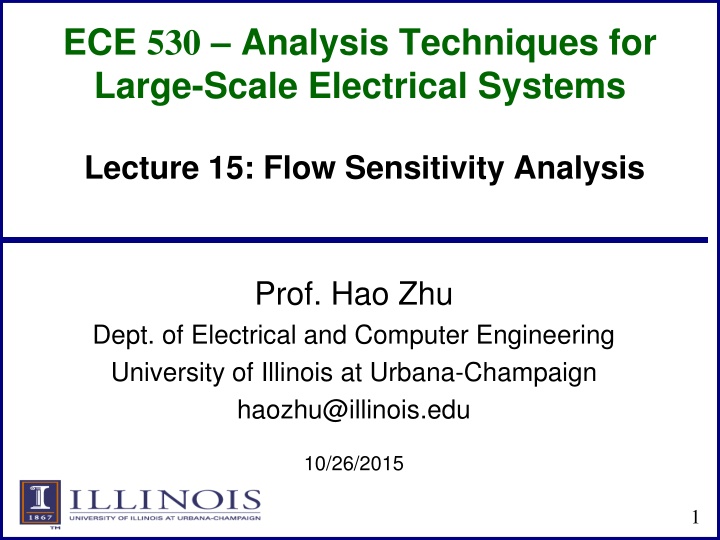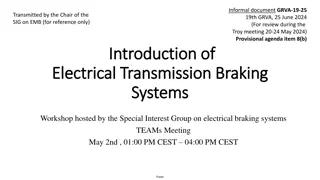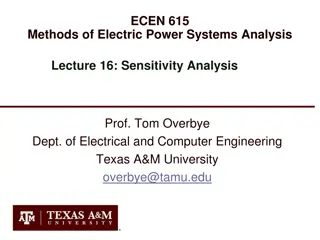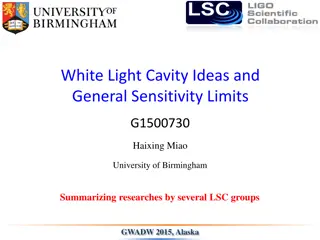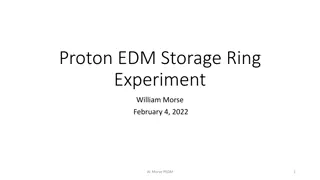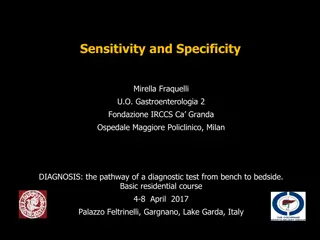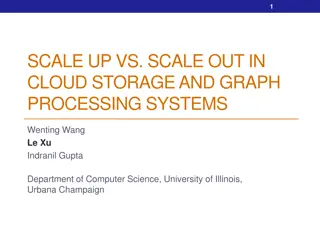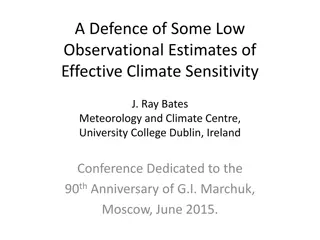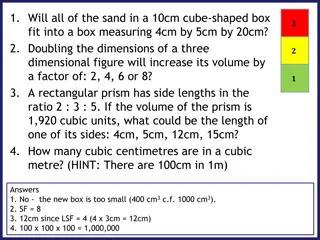Flow Sensitivity Analysis Techniques for Large-Scale Electrical Systems
Flow sensitivity analysis explores the impact of real power injections on line flows in electrical systems. This lecture delves into the mathematical derivations, definitions, and applications of distribution factors in analyzing power flow sensitivities. It covers problem formulations, power balance equations, first-order approximations, and the use of Jacobian matrices to understand system responses to small changes. The content emphasizes understanding system behavior and optimizing power distribution efficiency.
Download Presentation

Please find below an Image/Link to download the presentation.
The content on the website is provided AS IS for your information and personal use only. It may not be sold, licensed, or shared on other websites without obtaining consent from the author.If you encounter any issues during the download, it is possible that the publisher has removed the file from their server.
You are allowed to download the files provided on this website for personal or commercial use, subject to the condition that they are used lawfully. All files are the property of their respective owners.
The content on the website is provided AS IS for your information and personal use only. It may not be sold, licensed, or shared on other websites without obtaining consent from the author.
E N D
Presentation Transcript
ECE 530 Analysis Techniques for Large-Scale Electrical Systems Lecture 15: Flow Sensitivity Analysis Prof. Hao Zhu Dept. of Electrical and Computer Engineering University of Illinois at Urbana-Champaign haozhu@illinois.edu 10/26/2015 1
Sensitivity Analysis System description and notation Motivation for the sensitivity analysis Derivations of (linearized) flow sensitivity Definitions of the various distribution factors Analysis of the distribution factors Distribution factor applications 2
Problem Formulation Find how sensitive line flows are to real power injections Denote the system state by ? = ?1,?2, ,?? T ? = ?1,?2, ,?? T ? ? with ? = Denote the conditions corresponding to the existing commitment/dispatch by x(0), p(0) and f(0) so that = = ( ) 0 ( ) 0 g(x ,p ) 0 the power flow equations = = ( ) 0 ( ) 0 f h(x ) line active power flow vector 3
Power Balance Equations P g (x,p) g (x,p) = = g(x,p) where Q ( ( 1 ( ( 1 ) ) ) ) N ( ( ) ) ( ( ) ) = = + + P k k m k m k m k g V V G cos B sin p (x,p) km km = = N m ( ( ) ) ( ( ) ) = = Q k m m k m k m k g V V G sin B cos q (x,p) km km = = m constant ( ( ) ) 2 ( ( ) ) = = V V cos = = i i j i j i j i j h g V b V V sin i j (x) ( ) ( ), , 4
First-order Approximation For a small change, p, that moves the injection from p(0) to p(0) + p , we have a corresponding change in the state x satisfying ( ) ( ) g (x x, p + + + + = = 0 0 p) 0 We apply a first-order Taylor s series expansion as ( ( g x x,p p + + = + + = g x ) ) ( ( ) ) + + ( ) 0 ( ) 0 ( ) 0 ( ) 0 g x ,p x ( ( ) ) ( ) 0 ( ) 0 x p g p + + + + p . . . h o t ( ( ) ) ( ) 0 ( ) 0 x p 5
First-order Approximation We consider this to be a small signal change, so we can neglect the h.o.t. in the expansion Hence, in order to satisfy the power balance equations with this perturbation, it follows that g x g p + + p x 0 ( ( ) ) ( ( ) ) ( ) 0 ( ) 0 ( ) 0 ( ) 0 x p x p 6
Jacobian Matrix Also, using the nonlinear power flow equations, we obtain g p g p g p and then the power flow Jacobian P I = = = = 0 Q P P g g V g V g x = = = = J(x,p) Q Q g 7
Flow Sensitivity Matrix With the standard assumption that the power flow Jacobian is nonsingular, then I 0 1 ( ) ( ) 0 0 x J(x ,p ) p We can then compute the change in the line real power flow vector T T I 0 h x h x 1 ( ) 0 ( ) 0 J f x (x ,p ) p the flow sensitivity matrix 8
Sensitivity Comments Sensitivities can easily be calculated even for large systems If p is sparse (just a few injections) then we can use a fast forward; if sensitivities on a subset of lines are desired we could use a fast backward Sensitivities are dependent upon the operating point Also they include the impact of marginal losses Sensitivities could easily be expanded to include additional variables in x (such as phase shifter angle), or additional equations, such as reactive power flow 9
Sensitivity Comments, cont. Sensitivities are used in the optimal power flow; in that context a common application is to determine the sensitivities of an overloaded line to injections at all the buses In the below equation, how to quickly get these values? T T I 0 h x h x 1 ( ) 0 ( ) 0 J f x (x ,p ) p A useful reference is O. Alsac, J. Bright, M. Prais, B. Stott, Further Developments in LP-Based Optimal Power Flow, IEEE. Trans. on Power Systems, August 1990, pp. 697-711; especially see equation 3. 10
Sensitivity Example in PowerWorld Open case B5_DistFact and then Select Tools, Sensitivities, Flow and Voltage Sensitivities Select Single Meter, Multiple Transfers, Buses page Select the Device Type (Line/XFMR), Flow Type (MW), then select the line (from Bus 2 to Bus 3) Click Calculate Sensitivities; this shows impact of a single injection going to the slack bus (Bus 1) For our example of a transfer from 2 to 3 the value is the result we get for bus 2 (0.5440) minus the result for bus 3 (- 0.1808) = 0.7248 11
Sensitivity Example in PowerWorld If we change the conditions to the anticipated maximum loading (changing the load at 2 from 118 to 118+44=162 MW) and we re-evaluate the sensitivity we note it has changed little (from -0.7248 to -0.7241) Hence a linear approximation (at least for this scenario) could be justified With what we know so far, to handle the contingency situation, we would have to simulate the contingency, and reevaluate the sensitivity values We ll be developing a quicker (but more approximate) approach next 12
Linearized Sensitivity Analysis As the sensitivity matrix explicitly depends on x(0) and p(0), its computation is less than practical for large-scale power system applications To simplify the computation of the sensitivity matrix, we adopt a linearized approximation approach Recall the fast decoupled power flow assumptions The FDPF makes the following approximations: = = = 1. G 0 ij 2. 3. 1 V i = sin 0 cos 1 ij ij 13
Linearized Approximation By using the approximations from the FDPF we can get sensitivity values that are independent of the current state. That is, by using the B' and B" matrices ? 0 ?" ? ?0,?0 0 We can also linearize line flow equation ( ( ) ) 2 ( ( ) ) = = V V cos = = i i j i j i j i j h g V b V V sin i j (x) ( ) ( ), , By using the FDPF appxomations i j ( ) ( ( ) ) = = = = i j h b i j (x) ( ) , , X 14
Linearized Approximation Hence, for each line h h b a 0 V and thus, T h T T b b a a T A B h x L 1 = = = = L 1 0 h V 0 0 (the negative sign goes away because ?:= diag{?1,?2, ,??}) 15
Matrix Definitions Recall the series admittance of line ?? is ??+ ??? , and we define the matrix ? = diag{?1,?2, ,??} We define the L N incidence matrix: where the element j of vector ai is nonzero ( 1), whenever line ?? is coincident with bus j. ?1? ?2? ??? ? = 16
Linearized Real Power Flow Under these assumptions the change in the line real power flows are given as B 0 f BA 0 0 B 1 I 1 = = = = p p BA B p 0 The constant flow sensitivity matrix ? = ? ? ? 1 is termed as the injection shift factor (ISF) matrix. 17
Injection Shift Factors (ISFs) The ?,? -th element of ?, ? line l with respect to the injection at bus n Absorbed at the slack bus, so it is slack bus dependent The terms generation shift factor (GSF) and load shift factor (LSF) can be similarly defined Same concept, just a variation in the sign whether it is a generator or a load Sometimes the associated element is not a single line, but rather a combination of lines (an interface) Terminology used in North America are given in the NERC glossary (http://www.nerc.com/files/glossary_of_terms.pdf) ?, is called the ISF of 18
ISF : Interpretation + 1 n p slack bus n + + n f j i line slackbus p 1 n is the fraction of the additional 1 MW injection at node n that goes though line l
ISF : Properties By definition, depends on the location of the slack bus By definition, for since the injection and withdrawal buses are identical in this case and, consequently, no flow arises on any line l The magnitude of is at most 1, that is, 1 n slackbus L 0 n n 1 Note, this is strictly true only for the linear (lossless) case. In the nonlinear case, it is possible that a transaction decreases losses so a 1 MW injection changes a line flow by more than 1 MW.
Five Bus Example: Base Case 42 MW One Two Line 1 A 1.040 pu MVA 200 MW Line 2 A 1.050 pu MVA 260 MW Line 3 Line 4 slack 67 MW A MVA 258 MW 33 MW A 100 MW A MVA 118 MW MVA Line 5 Four 1.042 pu 1.042 pu 100 MW Line 6 Three 1.044 pu Five 118 MW 100 MW
Five Bus ISF, Line 4, Bus 2 (to Slack) 52 MW One Two Line 1 A 1.040 pu MVA 200 MW Line 2 A 1.050 pu MVA 280 MW Line 3 Line 4 slack A 63 MW 86% MVA 238 MW 37 MW A 100 MW A MVA 128 MW MVA Line 5 128 118 20 0.5 Four 1.042 pu 2 l 1.042 pu 4 100 MW Line 6 Three 1.044 pu Five = = 118 MW 100 MW 22
Five Bus Example ~ - = diag B 6.25, 12.5, 12.5, 12.5, 12.5, 10 0 0 0 1 The rows of A correspond to the lines and transformers, the columns correspond to the non-slack buses (buses 2 to 5); for each line there is a 1 at one end, a -1 at the other end (hence an assumed sign convention!). 0 0 0 1 0 0 0 1 = A 0 0 1 1 0 0 1 1 Here we put a 1 for the lower numbered bus 0 0 1 1 23
Five Bus Example 0 0 0 18.75 12.5 0 0 12.5 37.5 12.5 0 12.5 35 10 T = = B A BA 10 10 0.4545 0.3636 0.1818 0.5455 0.1818 0 0.1818 0.5455 0.2727 0.1818 0.2727 0 0.0909 0.2727 0.6364 0.0909 0.3636 0 0.0909 0.2727 0.6364 0.0909 0.3636 1.0000 1 = = = = B A B 24
Five Bus Example Comments At first glance, the numerically determined value of (128-118)/20=0.5 does not match closely with the analytic value of 0.5455; however, in doing the subtraction we have lost some numeric accuracy Adding more digits helps (128.40 117.55)/20 = 0.5425 The previous matrix derivation isn t intended for actual computation; ?is a full matrix so we would seldom compute all of its values Sparse vector methods can be used if we are only interested in the ISFs for certain lines and certain buses 25
